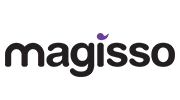Why emerging markets show promise for specialty coffee in a period of price uncertainty

Mature specialty coffee markets, such as North America, Western Europe, East Asia, and Australia, are facing unprecedented challenges. Marked by record coffee prices and rising inflation, the “new era” of specialty coffee is presenting a number of hurdles that are increasingly hard to navigate.
As operators in established regions face growing competition, emerging specialty coffee markets such as Eastern Europe, India, the Middle East, and Latin America are rapidly gaining traction. Consumer interest in quality coffee is thriving in these regions, but that’s not to say that businesses aren’t facing difficulties similar to those of their counterparts around the world.
I spoke to Andrea Clerici, Global Business Director at Cimbali Group, Irina Sharipova, a coffee consultant, Hanuman Jain, CEO of Ecotact, Alejandro Damian, a Q grader and lecturer, Vitaly Filmanovich, founder of Single Step Coffee Co, Hanna Skrypko, quality manager at Kitchen Coffee Roasters, to learn more.
You may also like our article on how specialty coffee is evolving outside of mature markets.


Established markets are increasingly under pressure
The global coffee industry is undergoing a period of significant financial strain that is pushing businesses to adapt quickly. Rising green coffee prices, increasing operational costs, and supply chain disruptions are resulting in tighter margins than ever before. As companies adjust by shifting to more cost-effective offerings and direct-to-consumer sales, others are turning to venture capital or strategic mergers to stay afloat.
These impacts are felt in specialty coffee markets across the world, but more so in regions where consumption is well established, such as North America, Western Europe, Japan, South Korea, and Australasia.
“Mature markets are highly competitive, and roasters must stay ahead of consumer preferences. Whether it’s adapting to changing tastes, exploring new formats like ready-to-drink coffee, or integrating specialty coffee into non-traditional retail spaces, staying proactive ensures continued relevance,” says Andrea Clerici, the Global Business Director at commercial coffee equipment manufacturer Cimbali Group. “Businesses that fail to evolve risk blending into a crowded market where larger, well-resourced competitors dominate on price.”
The rising cost of capital has also significantly impacted roasters and traders, making it difficult for them to secure short-term loans to cover the cost of large amounts of coffee upfront. Profit margins are squeezed, pushing businesses to make difficult decisions and remain agile in the wake of rapidly changing market conditions. As a result, some are downsizing operations, focusing on niche audiences, or implementing cost-cutting measures.
While these trends currently dominate established specialty coffee-consuming countries, the landscape in emerging markets offers a different narrative: one of rapid expansion, entrepreneurial spirit, and evolving consumer habits.


The steady trend towards specialty coffee in emerging markets
Specialty coffee consumption is increasing in less mature markets for a number of reasons. The expansion of multinational coffee chains – notably Starbucks and Costa Coffee – into new regions introduces consumers to different coffees, brewing methods, and types of beverages.
Passionate coffee professionals who move abroad and then return home bring their specialty coffee knowledge back with them, too. This then drives the proliferation of smaller independent coffee shops in previously untapped markets and increases consumer interest in specialty coffee.
Rapid growth in these regions is also the result of younger consumers, who have increasingly higher disposable income, and their changing needs and preferences. Bloomberg estimates that Gen Z alone has around US $360 billion in disposable income – a large majority of which they spend on food and beverages.
“Emerging markets often feel more dynamic and innovative than their mature counterparts. Specialty coffee in these regions is at its most vibrant, driving demand, inspiring imitators, and fostering creative solutions,” Andrea says. “While mature markets can feel homogenous and conservative, emerging ones are shaped by passionate promoters of specialty coffee and their ability to connect with local culture.
“For example, in Eastern Europe, the luxury automotive and music industries provide unique branding opportunities for coffee businesses, while in France, the influence of fashion accelerates the adoption of premium coffee experiences,” he adds.
Eastern Europe
Despite the huge demand for instant coffee, the branded coffee shop market is growing at pace in Eastern Europe. This is helping drive interest in high-quality and specialty coffees, particularly in the fast-growing markets of the Czech Republic, Poland, and Romania. According to the CBI, the number of specialty coffee shops and roasteries in Romania went from only three to more than 120 between 2013 and 2021. Similarly, the number of specialty coffee shops in Hungary has grown in the last few years, now reaching over 150.
In cities like Minsk in Belarus, specialty coffee consumption is also gradually gaining traction. “Not long ago, coffee was a luxury in Slavic cities like Minsk, enjoyed only by the wealthy,” says Alejandro Damian, a Q grader and lecturer with experience working in Latin America and Eastern Europe. “Times are changing; today, younger generations are embracing coffee, making it the most consumed beverage in this vibrant European capital after water.”
Vitaly Filmanovich, the founder of Single Step Coffee Co in Minsk, echoes this, saying: “Specialty coffee is still considered fancy and for enthusiasts, but younger generations are more open to it. They are beginning to see coffee as more than just caffeine but as an experience.”
Local specialty coffee roasters are also battling intense competition from large commercial brands that dominate supermarket shelves.
“Non-specialty coffee is still widely available, so many consumers are hesitant to pay the premium for specialty,” says Hanna Skrypko, the quality manager at Kitchen Coffee Roasters in Minsk. “However, there is a growing trend of conscious consumption, where people are increasingly interested in quality and sustainability.”
One promising sign is the increasing number of local specialty coffee shops that focus on education and community engagement. Events such as cuppings and brewing workshops are helping to familiarise consumers with specialty coffee, and younger coffee professionals are actively participating in these efforts.
Additionally, as global trends push for more sustainable practices, Eastern European coffee businesses are adapting. Many independent roasters are focusing on direct trade models, sustainable packaging, and innovative new products to differentiate themselves from mass-market competitors.
The Middle East
The coffee industry is growing at an unprecedented pace in the Middle East, where strong purchasing power and deep-rooted coffee culture that blends traditional and modern approaches drive interest in both branded and specialty coffee shops.
According to data from World Coffee Portal, the total MENA branded coffee shop market will exceed 16,460 stores by November 2029, representing a compound annual growth rate of over 8%. Saudi Arabia is expected to lead growth, while Morocco is forecast to be the fastest-growing market at 19.2% CAGR.
Dubai, a key hub for tourism and international trade, has seen a surge in specialty coffee roasteries, cafés, and events. The city recently hosted the fourth World of Coffee Dubai event, which attracted thousands of visitors and exhibitors.
“The market here is becoming increasingly competitive,” says coffee consultant Irina Sharipova, who works in Dubai. “But there’s still room for innovation, especially in sustainable business models.”
In Saudi Arabia, Riyadh, with its growing population and rising disposable income, is also seeing rapid expansion, hosting numerous coffee expos and fostering a thriving community of specialty coffee brands.
Irina highlights that the ease of setting up coffee businesses in the UAE and Saudi Arabia has attracted international coffee professionals, further driving industry growth. But she emphasises that catering to local taste preferences remains crucial.
“There’s a real appreciation for high-quality coffee, but businesses that succeed are those that respect and incorporate regional traditions,” she says, noting that traditional Arabic coffee, often brewed with spices like cardamom and saffron, remains a staple selling point for most consumers.
Additionally, innovations in retail and customer experience are shaping the market. Many coffee businesses in Dubai and Riyadh have embraced digital strategies, offering mobile ordering, subscription services, and interactive customer engagement through social media.
Petrol stations and convenience stores in the region are also beginning to offer higher-quality coffee options, further expanding accessibility.
India
Over the last few years, India has surpassed China as the most populous country, with more than half of its population being under 30. The growing population of younger consumers with higher disposable income has led to explosive growth in India’s specialty coffee market, with roasters like Third Wave Coffee and Blue Tokai standing out as leading brands.
“There is an unprecedented specialty coffee wave across India on the consumption side,” says Hanuman Jain, the CEO of specialty coffee packaging manufacturer Ecotact, which is based in the country. “Still, the majority of consumption and trade are Indian arabica as imported coffees have high tariffs in India.”
Roasters like Blue Tokai and Subko work with and champion national producers to spotlight high-quality lots from key growing regions like Karnataka, helping make specialty coffee accessible to more consumers.
“Indian coffee production is also increasing, and with prices for robusta nearing all-time highs, producers are selling their coffees in different international markets,” Hanuman says.
The country’s exports surpassed US $1 billion for the first time in January 2025, representing a 29% increase on the same period in the previous year.
“With Indian consumers becoming more prosperous, we see the proliferation of specialty café culture,” Hanuman adds. “Investment in such brands has jumped.”
Latin America
Other prominent producing countries are also experiencing a notable increase in specialty coffee consumption.
“In recent years, Latin America’s specialty coffee markets have seen rapid growth, driven by changing consumer preferences toward sustainability, ethical sourcing, and high-quality, unique flavours,” Andrea says. “The market generated approximately US $3.39 billion in revenue in 2023, with a projected CAGR of 7.7% from 2024 to 2030.
“Countries like Brazil and Colombia are experiencing a surge in specialty coffee culture, particularly in urban centres where small specialty cafés are flourishing,” he adds. “Consumers increasingly prefer single-origin coffees with traceable origins and are drawn to Fair Trade, organic, and gourmet options.”
Research from the Specialty Coffee Association shows that Brazil’s specialty coffee market share doubled between 2016 and 2018 from 6 to 12% – and is likely to have grown since. The same report found that in 2018, the estimated value of the Colombian specialty coffee market was around US $1.52 billion, which has undoubtedly increased in the years following.
“The region’s evolving café culture, exemplified by events like Argentina’s Festival de Café de Buenos Aires (FECA), highlights the region’s growing enthusiasm for specialty coffee experiences,” Andrea says. “The sense of community plays a crucial role in the growth and scaling of emerging markets. Unlike saturated Western markets, where rising business costs and intense competition have made it harder to sustain the fun-loving, entrepreneurial spirit that defined early specialty coffee, emerging markets still have space to develop organically.”


Opportunities and challenges lie ahead
While emerging markets offer substantial opportunities for domestic and international specialty coffee brands, they are not without challenges. As these markets mature, they are likely to face the same financial pressures currently experienced in more established regions.
“To an extent, emerging markets are also dealing with factors connected to high coffee prices,” Hanuman explains. “But there is more resilience given the increased investment and the zeal to succeed. More established consuming countries will also help emerging markets learn how to deal with such challenging times.”
Eastern Europe, the Middle East, and India are on similar trajectories as more mature markets, but the timelines differ. Irina estimates that cities like Dubai and Riyadh could reach a level of market saturation similar to the US or UK within seven to ten years. Minsk and other Eastern European capitals are progressing more slowly but show long-term promise.
The volatility of green coffee prices, increasing competition, and access to financing are likely to be key hurdles in the near future.
“It’s a shaky ride for us, just like the rest of the world,” Hanna says, highlighting anticipated difficulties in adjusting to rising green coffee costs. “Roasters will have to decide whether to push forward and invest or scale back.”
Similarly, Irina warns that Middle Eastern markets will not be immune to consolidation. “We will see more roasteries and cafés merging or closing down as the market reaches saturation.”
One strategy for businesses to mitigate upcoming risks is to establish direct trade relationships with producers. This approach can secure more stable pricing and better quality control.
Additionally, investment in education and workforce training is crucial. “A knowledgeable team is the backbone of any successful specialty coffee business,” Irina tells me. “If baristas and roasters feel valued, they will be more committed to the brand.”
The role of education, events, and community
Educational programmes, competitions, and industry events will continue to play a critical role in shaping the specialty coffee landscape in emerging markets.
“The world over, the specialty coffee community is fun-loving and caring. More than the trade, it is the relationship which has driven the business and the coffee culture,” Hanuman says. “These are difficult times, and there are bound to be some hiccups and tests of relationships, but emerging markets are trying to build trust and establish themselves as important and reliable partners.”
In Minsk, coffee tastings and workshops have helped bridge the knowledge gap and introduce consumers to high-quality coffee. Similarly, in the Middle East, events like coffee expos and barista championships serve as catalysts for industry growth.
Social media also plays a major role in consumer engagement. “Visual storytelling is essential,” Irina says. “Many new cafés in Dubai and Riyadh have built their brands through Instagram, using aesthetics and online engagement to attract customers.”


Despite the challenges ahead, the growth of specialty coffee in these regions presents exciting opportunities for roasters, traders, and coffee professionals.
The key to success lies in adaptability; businesses must stay ahead of trends, respect local cultures, and be prepared to navigate the financial complexities of a growing industry.
“Specialty coffee gained its foothold by offering something distinct and memorable. By fostering a culture of continuous learning, staying agile, and embracing innovation, roasters can navigate economic uncertainties while preserving the entrepreneurial energy that has always defined specialty coffee,” Andrea concludes.
For those looking to enter these emerging markets, the message is clear: education, innovation, and strong partnerships will be the foundation for sustainable success.
Enjoyed this? Then read our article on how coffee businesses can expand into new markets.
Photo credits: Cimbali, Alejandro Damian
Perfect Daily Grind
Want to read more articles like this? Sign up for our newsletter!









